WSJ Slams Reported US Plans For A Limited Deal With Iran
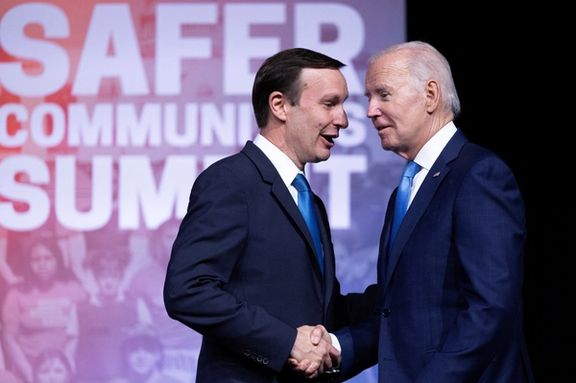
The Wall Street Editorial Board has slammed reported plans by the Biden administration to reach a limited nuclear deal with Iran in exchange for billions of dollars.

The Wall Street Editorial Board has slammed reported plans by the Biden administration to reach a limited nuclear deal with Iran in exchange for billions of dollars.
In an editorial on Friday, WSJ said the reported deal taking shape is not what President Joe Biden promised when he embarked on talks with the Islamic Republic in early 2021.
Biden had promised a “longer and stronger” agreement, the Journal said, “Now, in a remarkable retreat, the Biden Administration is pursuing an unwritten ‚understanding‘ with Iran to get to the brink of a nuclear breakout but go no further.“
The Biden administration has denied any deals with Iran, acknowledging that contacts were made to convey US demands. The latest denial came from Secretary of State Antony Blinken on Friday during a press conference.
“With regard to Iran, some of the reports that we’ve seen about an agreement on nuclear matters or, for that matter, on detainees are simply not accurate and not true,” Blinken said.
The WSJ says that in the deal taking shape Iran will keep all of its 60-percent enriched uranium, without clarity about international monitoring of its nuclear activities, while Tehran can break the unwritten “understanding” over any issue in the future.
The editorial also criticized a deal earlier this month that allows Iraq to release $2.7 billion of Iran’s frozen funds ostensibly for spending mainly on food imports.
"The Administration says Iran will spend the Iraqi funds only on food and medicine, as if money isn’t fungible. In reality the U.S. is freeing up billions of dollars that will finance the Islamic Revolutionary Guard Corps and its imperialism across the Middle East," the editorial said.

The United States has assured Israel it will keep its military edge and freedom to act against Iran, as it aims for an interim nuclear deal, a report said Friday.
Israeli Channel 12 news reported that US Secretary of Defense Lloyd Austin and Israeli Defense Minister Yoav Gallant met Thursday on the sidelines of NATO meeting in Brussels and reached understandings in the light of an emerging nuclear deal between Tehran and Washington.
In recent weeks, multiple news outlets have reported on direct and indirect US Iranian talks on reducing tensions, a possible interim unwritten agreement to slow down Tehran’s nuclear program and release of Americans held in Iran.
The Biden administration has repeatedly denied any deals with Iran, acknowledging that contacts were made to make clear what US demands were. The latest denial came from Secretary of State Antony Blinken on Friday during a press conference.
“With regard to Iran, some of the reports that we’ve seen about an agreement on nuclear matters or, for that matter, on detainees are simply not accurate and not true,” Blinken said.
Channel 12 news also quoted senior security officials as saying that cooperation with the United States has increased on the issue of Iran, involving the Israeli Defense forces in joint efforts.
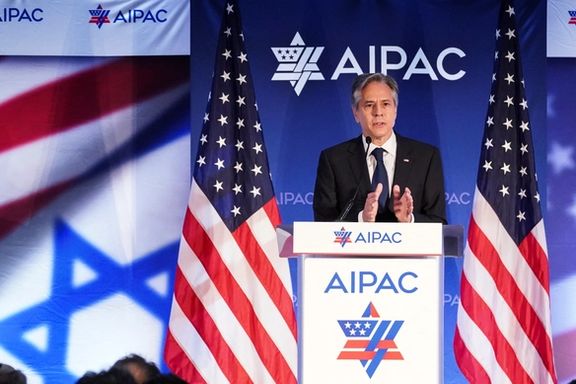
Washington has assured Jerusalem that it will maintain its military edge over Iran, and Austin also made clear to Gallant that in addition to close cooperation over Iran, Israel will maintain a free hand to act against adversaries.
Israel has made clear that if it concludes Iran is close to obtaining nuclear weapons, it will not limit itself by any agreements the United States and others might have reached with Tehran and will take military action to stop what it sees as an existential threat.
Israeli officials and media indicate that some sort of a deal between Washington and Tehran is moving forward and that Israel will accept the general parameters of a possible agreement and will not try to foil it.
Israel’s ambassador in the US Michael Herzog was quoted as saying, “Diplomacy isn’t necessarily a bad thing,” during an event hosted by the Democratic Majority For Israel, according to Haaretz.
“As far as we’re concerned, diplomacy in and of itself, and such understandings, are not necessarily bad to the extent that they can help deescalate a situation,” Herzog said.
Iran has acknowledged diplomatic efforts behind the scenes but has been cautious in heralding any imminent deals.
Nour News, affiliated with the national security council on Friday said the White House is showing "positive signals of changing its approach toward Iran in the past few months".
Regarding reports about a possible nuclear deal, the website did not express optimism, but its claim of positive signals was an indication of some satisfaction at the security council.
‘Reformist’ media in Tehran, critical of the ruling hardliners, continued to argue for flexibility and a deal that would lift crippling US sanctions imposed since 2018 when former President Donald Trump pulled of the 2015 JCPOA accord.
Aftab News close to former President Hassan Rouhani in an article on Saturday recounted the “trillions of dollars” in damages to Iran’s economy resulting from its nuclear dispute with the West over a period of two decades.
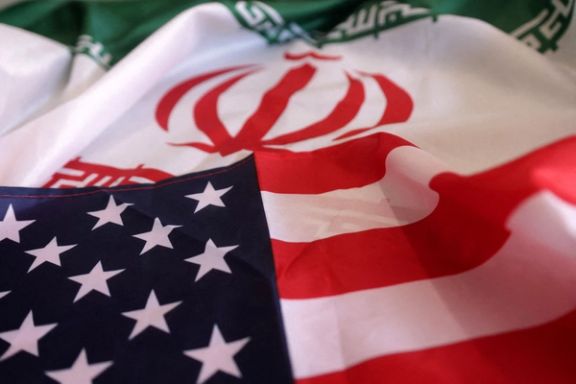
Iran's Nour News close to the national security council says the White House is showing "positive signals of changing its approach toward Iran in the past few months".
Regarding reports about a possible nuclear agreement between Iran and the United States, the website did not express optimism, but claimed Washington is giving positive signals.
"As the American media has speculated, one cannot be optimistic about a rapid agreement on issues related to Iran's nuclear matter," added the piece published on Friday.
“However, raising this issue by two American media outlets, which are known for their connection with the US political and security agencies, shows the White House is seeking to convey positive signals and return to the negotiating table, which Iran has never left.”
Nour News also claimed the new US approach is the result of the Islamic Republic's efforts to suppress the nationwide protests, as well as Tehran's decision to revive ties with Riyadh.
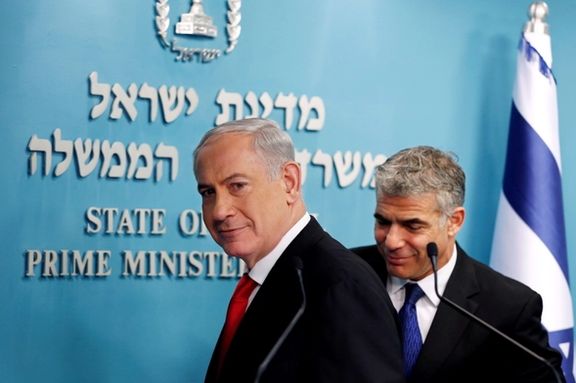
Meanwhile, Israeli opposition leader Yair Lapid slammed Netanyahu for allowing the agreement between Iran and the US to take place, claiming Netanyahu’s inability to influence the Biden Administration is due to the controversial judicial overhaul.
“Despite attempts to call it something else, what the US and Iran are about to sign is a nuclear agreement. It’s the same agreement that they tried to sign during [the Bennett-Lapid] government and we were able to prevent,” the former prime minister noted.
This comes as Israel's ambassador to Washington, Michael Herzog said in a speech on Thursday that “diplomacy [with Iran] isn’t necessarily a bad thing”.
In recent days, Axios and the New York Times reported on the talks between Iran and the United States.
The New York Times quoted the officials of the three countries as saying that “the Biden administration has been negotiating quietly with Iran to limit Tehran’s nuclear program and free imprisoned Americans.”
“The US goal is to reach an informal, unwritten agreement, which some Iranian officials are calling a political cease-fire. It would aim to prevent a further escalation in a long-hostile relationship that has grown even more fraught as Iran builds up a stockpile of highly enriched uranium close to bomb-grade purity, supplies Russia with drones for use in Ukraine and brutally cracks down on domestic political protests.”
Axios last week reported that US and Iranian officials held indirect talks in Oman last month with Omani officials shuttling between the two sides and passing messages.
The report also quoted five Israeli lawmakers saying that the mini-agreement includes Iranian commitment not to enrich uranium above the level of 60%, a US willingness to allow for the release of billions of dollars in Iranian funds that are currently frozen, and a prisoner exchange deal.
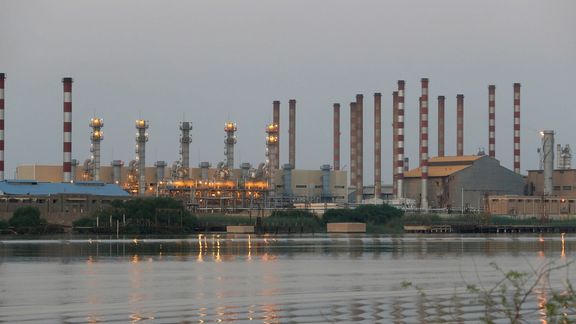
Iran’s oil sales have reportedly hit a record high since the US withdrew from the nuclear deal and reinstated sanctions in 2018, but pundits wonder where the money goes.
In an article on Friday, Bloomberg confirmed earlier claims by Islamic Republic officials about the rise in exports, saying that Iranian oil is quietly flooding into the global market again.
Citing data from market analytics provider Kpler, global strategic energy-consulting firm SVB Energy International, FACTS Global Energy Group (FGE) and the International Energy Agency, Bloomberg said that Iran’s exports have surged to the highest level in almost five years, “fortifying its re-emergence on the geopolitical stage while posing risks for a fragile global crude market.”
OPEC+ countries have repeatedly cut production to restrict supplies and control the plummeting prices.
“Iran’s crude exports smashed it last month,” said Homayoun Falakshahi, a senior analyst at Kpler. “Iranian crude is extremely interesting for those willing to take the risk to buy.”
As expected, Tehran’s ally China is its main customer, albeit with hefty discounts, which help smaller Chinese refiners offset a recent slump in profit margins.

While tanker-tracking shows that China has remained Tehran’s main buyer, official data registers no imports from the Islamic Republic in the past year. Instead, purchases have soared from Malaysia, where Iranian cargoes are often sent on a so-called “dark fleet” of tankers with transponders deactivated to avoid detection for transfer to another ship, blurring the origins of the consignment.
This practice has been going on since 2019, when the United States imposed full third-party sanctions on Iranian crude exports.
The regime is trying to save its battered economy through all means available, including mending relations with regional rivals Saudi Arabia, Bahrain, and Egypt; fostering ties with China; and most recently a tentative behind-the-scenes diplomatic effort to deescalate with Washington and the UN nuclear watchdog, the IAEA.
However, the extra sales have not been translated into tangible results in its rampant inflation rate at 70 percent, plunging national currency and popular dissatisfaction, manifested in periodic protests and strikes all over the country.
“China’s willingness to support Iran by taking its sanctioned oil, suggests a slight improvement in Iran-China relations,” Bloomberg quoted Greg Brew, an analyst at consultants Eurasia Group. He added that “All of this supports the view that Iran’s position is improving, along with its advancing normalization with other regional states,” especially given the fact the Beijing itself brokered the detente between Tehran and Riyadh, a rapprochement that was seen as a Saudi favor to China.
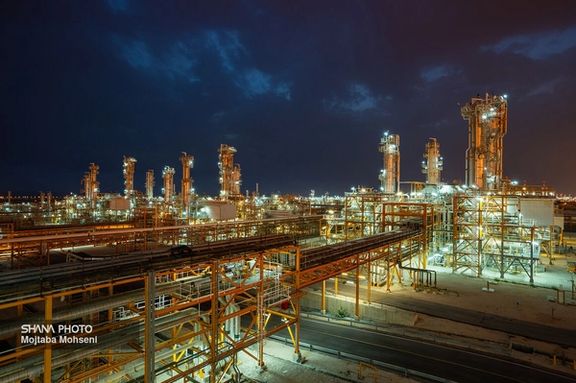
According to an article in Iranian daily Donya-e-Eqtesad, Iran’s oil exports – including crude, oil products, natural gas and condensates – was about $118 billion in 2011 when international nuclear sanctions were imposed, slashing the exports to half of that amount. Then came the 2014 oil price crash that pushed revenues down to $33 billion.
After the JCPOA was signed and international sanctions were lifted in 2015, Iran’s revenues began to rise and reached $66 billion in 2017 for a short while before the US pulled out of the JCPOA in May 2018 and again imposed sanctions that expanded a year later. By 2020, exports declined to about $20 billion and by some accounts to less than $10 billion.
The picture began to change toward the end of 2020 as Joe Biden won the presidential election and vowed to return to the JCPOA. At that point China began to increase oil imports from Iran.
Crude shipments have doubled since last autumn to reach 1.6 million barrels a day in May, even as American sanctions remain in place, Bloomberg claimed, citing Paris-based IEA as estimating that production has hit 2.9 million barrels a day, the highest since late 2018. “Consultants SVB Energy, Petro-Logistics SA and FGE believe that output is even higher, maybe surpassing 3 million barrels a day,” the report said.
Iran’s surge in shipments – and presumably the rise in revenues – has baffled economists and business analysts in Iran and abroad about where such a huge income is being spent, given that Iran’s currency has halved in value since mid-2022.
Mousa Ghaninejad, a professor of economics, recently said that “the oil money belongs to the people,” noting that “if the government takes it and spends it, so it should remove the taxes.”
He made the comment as the Raisi administration raised taxes by 59 percent in the budget bill of the current Iranian year (started in March), a staggering burden on its people amid high inflation and growing poverty. The total tax revenues planned in the draft budget will surpass $20 billion based on the current rate of exchange. In Iranian currency, however, this is a staggering 8.3 quadrillion rials – that is with 15 zeros.
Despite the huge tax bill for the people, the government budget still has a 50-percent deficit, due to a chaotic downturn in the economy mainly triggered by US sanctions on its oil exports and international banking.
According to a report by Tejarat News, the oil revenues are spent to balance the budget deficit as well as importing food items.
Aside from an overestimation of Iranian oil shipments, another explanation for the lack of a positive impact from increased exports is suspected deep discounts offered to China. Tejarat news for example said that China pays only two-thirds of the agreed price in cash and the rest is barter.
Iran also must undergo many other expenses for the illicit shipments and then lose more money trying to recoup revenues despite the US banking sanctions. Many different types of middlemen take huge profits for facilitating all these transactions. Otherwise, if Iran is charging even $60 a barrel, at the current rate of estimated exports, it would make $33 billion annually just from crude exports and more than $20 billion from oil products, balancing its budget.

Iran has reinstalled ten cameras of the UN nuclear watchdog in one of its installations that were removed last year as tensions rose over its nuclear program.
Last year, Iran had turned off 27 cameras or monitoring devices installed by the International Atomic Energy Agency (IAEA), when the UN watchdog’s board of governors in June 2022 censured Tehran for its lack of cooperation with the agency and excessive uranium enrichment.
On Thursday, Behrouz Kamalvandi, the spokesman of Iran’s atomic agency, was quoted by local media as saying that ten of these cameras have been reinstalled in Esfahan’s Natanz facility, which is a major enrichment center, which apparently has a centrifuge production facility making the machines used in uranium enrichment.
He added that the centrifuge manufacturing center in Esfahan is the same Karaj centrifuge production line – the TESA Karaj, a now decommissioned workshop in the west of the capital Tehran -- that was moved to a safe place aftera June 2021 attack that Iran said Israel was responsible for. The IAEA had confirmed that the production of centrifuge rotor tubes and bellows at TESA Karaj Complex has stopped.
An IAEA report cited by Reuters said Iran had informed the agency on January 19 that it intended to “produce centrifuge rotor tubes and bellows at a new location in Esfahan, instead of at the centrifuge component production workshop at the TESA Karaj complex, and that the Agency could adjust its surveillance and monitoring measures accordingly.”
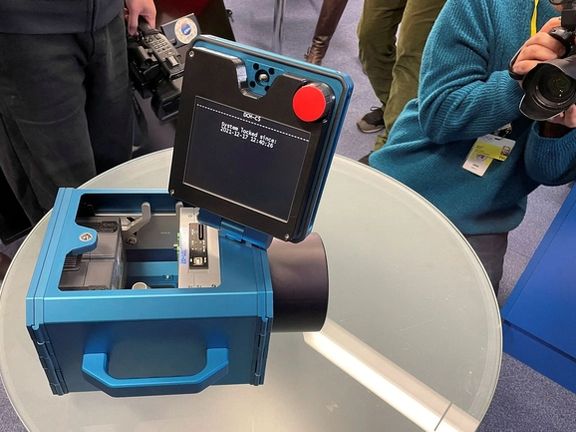
According to Kamalvandi, the data stored in the re-installed cameras will remain with Iran and the agency will not have access to them until the JCPOA nuclear agreement is restored.
A law passed in Iran in December 2020, the IAEA does not have automatic access to the manufacturing process or to the cameras’ footage. Under current arrangements covering nuclear sites, Iran is storing data from cameras and other monitoring equipment but has said the agency will not have access to the data until and unless the signatories find a way to restore the 2015 nuclear deal, the JCPOA (Joint Comprehensive Plan of Action).
The IAEA is responsible for monitoring and verifying Iran’s compliance with the 2015 nuclear deal, which limited the country’s nuclear activities in exchange for sanctions relief, but Iran has been gradually scaling back its commitments under the JCPOA in response to the US withdrawal from the agreement and the re-imposition of sanctions.
The US nuclear watchdog can continue its monitoring of Iran’s nuclear program through other means, including satellite imagery, but the loss of the cameras raised concerns about the agency’s ability to detect any potential covert activities.
Since early May, IAEA Director-General Rafael Mariano Grossi had been saying that the agency was installing cameras and reconnecting some online monitoring systems as part of an agreement between Tehran and the agency. However, as soon as that agreement had been announced in March, the Atomic Energy Organization of Iran and IAEA offered a different interpretation about what it would include, raising questions about its implementation.
The news about Iran reinstalling the cameras came on the heels of reports about Tehran and Washington holding indirect talks to sketch steps that could limit the Iranian nuclear program, release some detained US citizens and unfreeze some of the Islamic Republic’s funds abroad.
Reuters reported on Friday that these steps would be cast as an "understanding" rather than an agreement which would require a review by the US Congress, where many oppose giving Iran benefits because of its military aid to Russia, domestic repression and its support for proxies that have attacked US interests in the region.
American officials have dismissed reports of an impending interim deal, using carefully constructed denials that leave open the possibility of a less formal "understanding" that could avoid congressional review.
Foreign Ministry spokesman Nasser Kanaani also rejected the possibility of an interim or partial deal, emphasizing that they are only after the revival of the JCPOA in its entirety.
Denying the existence of such a deal, US State Department spokesman Matthew Miller said Thursday that Washington wanted Tehran to de-escalate tensions and limit nuclear activities, cease support for regional proxy groups, halt support for Russia's war on Ukraine and release detained US citizens. "We continue to use diplomatic engagements to pursue all of these goals," he added, without giving details.
Reuters cited an unnamed Iranian official as saying: "Call it whatever you want, whether a temporary deal, an interim deal, or a mutual understanding - both sides want to prevent further escalation."
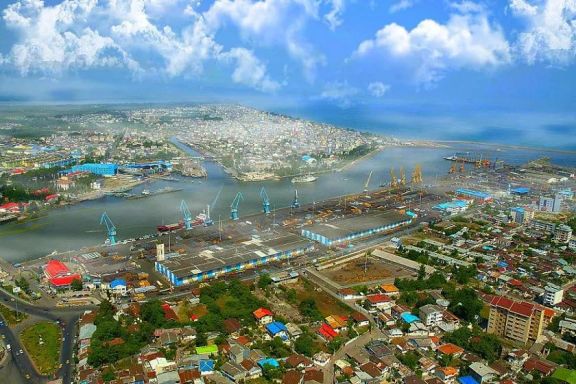
Iran and Russia have discussed plans to launch a joint shipping company amid international sanctions on both countries and expanding bilateral ties.
Iranian Road Minister Mehrdad Bazrpash, who has travelled to Russia to attend the 26th Saint Petersburg International Economic Forum (SPIEF), urged the launch of a joint shipment company as soon as possible.
In a meeting with Igor Levitin, aide to the President Vladimir Putin, and the governors of the Volga River region the two sides reviewed the capacities of transportation from the Volga and the inland Caspian Sea, IRNA state news agency reported.
Dmitry Azarov, the governor of Russia's Samara, which is one the top ten Russian cities in terms of national income, also proposed creating a river hub in the three ports of Syzran, Tolyatti and Samara port, saying the development of these ports are important for Putin.
CNN reported last month that Tehran is using the Caspian Sea to transfer suspected weapons cargoes to Moscow.
It quoted experts as saying that as cooperation between the two countries deepens, the Caspian Sea route is being used to move drones, ammunition, and mortar shells that the Russian government has purchased from Iran to use in Ukraine.
Last year, shipping analytics company Vortexa also reported that eleven ships that previously carried Iranian crude transported Russian oil and products since April 2022.
“As more companies scale back from carrying Russian crude and products, those familiar with the sanctioned crude trade will continue using their tankers to assist Russia in exporting oil East of Suez,” Armen Azizian, a crude market analyst at Vortexa.